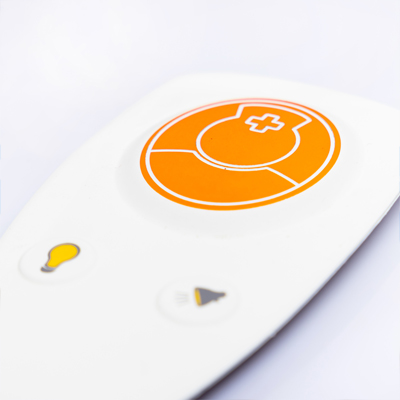
Membrane switches have become a staple in modern device design, offering sleek, user-friendly interfaces for everything from industrial controls to household appliances. A critical aspect of their functionality and aesthetic appeal is backlighting, which not only illuminates the switch but also enhances user interaction. The quest for the most uniform light distribution is not just a matter of visual pleasure but also of practical usability.
At its core, a membrane switch is an electrical switch for turning a circuit on and off. It differs from a mechanical switch in that it's made up of layers of flexible materials. Each membrane switch consists of a graphic interface layer, a circuitry layer, and a backlighting layer, which is our focus.

There are several backlighting techniques, each with its own set of advantages and challenges. The main contenders are Electroluminescent (EL), Light Emitting Diodes (LED), Fiber Optic, and Light Guide Film (LGF).
Electroluminescent (EL) Backlighting: EL backlighting works by passing an electric current through phosphorescent materials. It's known for its smooth, diffuse light but has limitations in brightness and color variety.
LED Backlighting: LEDs are perhaps the most common form of backlighting today. They're energy-efficient, bright, and can produce a range of colors. However, achieving uniform light distribution with LEDs can be challenging.
Fiber Optic Backlighting: Fiber optic backlighting uses threads of fiber optics to distribute light from a single source. This technique can provide uniform lighting and is flexible in design but can be complex to implement.
Light Guide Film (LGF) Backlighting: LGF utilizes a thin film embedded with light-distributing patterns. It's a newer technology that promises excellent uniformity and can be integrated with LEDs for a more efficient design.
When it comes to uniform light distribution, LGF (Light Guide Film) backlighting stands out as a superior choice. LGF backlighting combines the efficiency and energy savings of LEDs with a specialized light guide film that diffuses light evenly across the entire switch surface. This results in a more consistent and uniform illumination, ensuring that the backlit keys or symbols are clearly visible, even in low-light environments.
In comparison to traditional backlighting methods, LGF technology minimizes light hotspots and eliminates uneven lighting, enhancing the overall aesthetic and functionality of the device. This makes it particularly beneficial in applications where visual clarity and a sleek, professional appearance are essential, such as in consumer electronics, medical devices, and industrial control panels.
While LGF (Light Guide Film) backlighting may have a higher initial cost compared to other traditional lighting options, such as fiber optics or electroluminescent (EL) backlighting, it can prove to be a more cost-effective solution over time. The higher upfront investment is offset by its longevity and lower maintenance requirements. LGF systems typically last longer, reducing the need for frequent replacements or repairs. Additionally, the uniform light distribution provided by LGF reduces the need for more complex or expensive light management systems. As a result, despite the initial cost, the overall total cost of ownership can be lower, making it a worthwhile investment in the long term, particularly for devices requiring consistent, high-quality backlighting.
In terms of sustainability, LED and LGF backlighting technologies offer significant environmental benefits over older lighting solutions, such as electroluminescent (EL) panels and fiber optics. Both LEDs and LGF systems have longer lifespans, often lasting tens of thousands of hours, and they consume significantly less energy than traditional lighting options. This results in reduced waste and lower carbon footprints as these technologies need to be replaced less frequently and use less power during their operational lifespan.
In contrast, EL and fiber optics tend to have shorter lifespans and may require more frequent replacement, generating additional waste. Furthermore, LED and LGF backlighting are increasingly being made with more eco-friendly materials, contributing to a more sustainable product lifecycle. Overall, LGF and LED backlighting are more energy-efficient, reducing environmental impact both during production and throughout the device's operational life.
After examining various backlighting techniques, LGF emerges as the leader in providing the most uniform light distribution for membrane switches. Its integration with LED technology makes it a robust, efficient, and aesthetically superior choice.